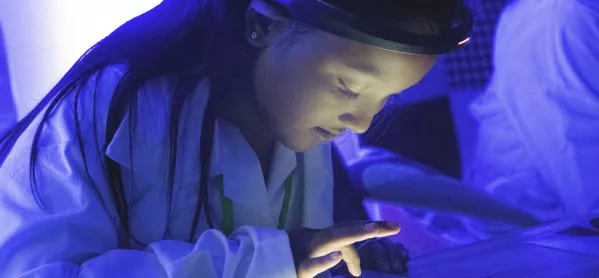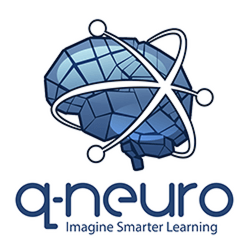What is EEG and will it be used in schools?

A classroom full of pupils wearing devices that can monitor brainwaves as they learn may sound like a scene from a sci-fi movie. Yet such a vision could one day become a reality thanks to mobile electroencephalography (EEG) headsets.
But what exactly is EEG? It is the measurement of the tiny electrical signals our brains give off, commonly known as brainwaves. It’s been used in the medical profession for almost a hundred years to look for signs of epilepsy and other conditions, such as dementia or brain tumours.
By monitoring these signals in real-time, it’s possible to see how someone is feeling during a certain process. For example, if you set a task, you can see how they respond to it - is it too hard, causing them to feel stressed, meaning it needs simplifying? Or is it too easy, meaning they’re becoming bored?
It’s not hard to see how this could be used in a classroom by enabling a teacher to set tasks that could dynamically respond to a child’s learning level to keep them engaged and potentially improve learning outcomes.
Professor Sara de Freitas is pro vice-chancellor for education at Aston University and her career has focused heavily on how technology can augment learning. She thinks there is huge potential for EEG in the classroom.
“Logically, anything that is giving you feedback is going to be reinforcing learning - you don’t need a huge imagination to see how they [EEG headsets] could be used in the future,” she says.
Kirsty Grundy, principal of Shireland Technology Primary and primary director for Shireland Collegiate Academy Trust, concurs, noting it could give teachers a truer insight into a pupil’s learning journey.
“Often, teachers have preconceptions of how a child is doing, but learning is not a constant. It goes go up and down. If you had data that was showing how they were learning, though, it could make it easy to tailor learning for them more easily.”
Price points
Like so much of modern technology, in the past decade, as capabilities have grown, prices for EEG headsets have come down to levels that, while not exactly cheap aren’t astronomical, with devices online ranging from $100 to around $800 (£80-£650). Such price points mean the market for EEG devices is expected to be worth $1.6 billion (£1.3 billion) by 2026, according to Grand View Research.
Of course, this doesn’t mean EEG will be arriving in classrooms overnight. Carolina Milanesi, a technology analyst at Creative Strategies, admits that while the potential is fascinating, uptake is some way off if you look at the adoption rates of other technologies.
“It has taken a long time for schools to even get to a one-to-one tablet or Chromebook setup, while AR and VR [augmented reality and virtual reality] solutions that can also help with learning are still seen as a luxury, so I do wonder how long it will take for this kind of solution [EEG] to be accepted.”
She notes, too, that health regulations around use could hinder uptake while concerns around privacy will likely need to be assuaged.
After all, technology that can read brainwaves will be seen by many as being able to “read minds” and, no doubt, teachers, pupils and parents will have concerns.
One firm operating in this space, Qneuro, confronts this issue by clearly stating on its website that EEG headsets, “will not read your mind”. It adds: “This is a device that records naturally generated electrical signals that are produced by the firing of brain cells in everyone’s brain…While there is a great deal of information that we can pick up that gives insight into brain activity, it is nowhere close to being able to read anyone’s mind.”
Qneuro, based on the West Coast of the US, was founded by Dr Dhiraj Jeyanandarajan, a certified neurologist with subspecialty training in neurophysiology, and Cort Horton, a cognitive scientist with expertise in EEG research.
Jeyanandarajan realised there was potential to bring EEG into education after he witnessed his own children using games to learn. “We thought how we could use that information [EEG readings] to make learning better, more effective and engaging,” he says.
Five years on, the firm has been trying to develop technology to balance learning and gameplay. This has led to the creation of games such as NeuroRacer, a futuristic racing game that asks study questions as you play. Depending on how you score and how your brainwaves are responding, the difficulty changes to help maintain interest and improve learning outcomes.
Proving the potential
The key question is, does it work? Research into EEG headsets that de Freitas was involved in certainly suggests so. A paper from 2014 analysing EEG concluded that “there are key benefits in using these neuroscientific techniques for developing serious games” because they provide a “better understanding of the neurophysiological outcomes of the learner during learning periods and tasks”.
Qneuro is also involved in research around the technology to ensure it can substantiate its claims - and Dr Jeyanandarajan is confident this will be demonstrated, noting that existing lab studies have done just this. Nevertheless, given his medical background, he understands the importance of real-world studies and says he has plans to expand in-school trials soon.
So it seems EEG is a promising technology for classroom use but its adoption is likely to be slow. However, in the not-too-distant future, the idea of pupils wearing headsets that are monitoring their brainwaves could be coming out of sci-fi and into a classroom near you.
Find out more about Qnuero here
